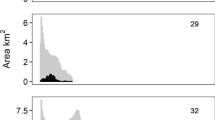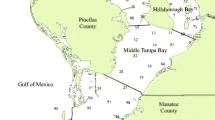Abstract
The effect that measurement error of predictor variables has on regression inference is well known in the statistical literature. However, the influence of measurement error on the ability to quantify relationships between chemical stressors and biological responses has received little attention in ecotoxicology. We present a common data-collection scenario and demonstrate that the relationship between explanatory and response variables is consistently underestimated when measurement error is ignored. A straightforward extension of the regression calibration method is to use a nonparametric method to smooth the predictor variable with respect to another covariate (e.g., time) and using the smoothed predictor to estimate the response variable. We conducted a simulation study to compare the effectiveness of the proposed method to the naive analysis that ignores measurement error. We conclude that the method satisfactorily addresses the problem when measurement error is moderate to large, and does not result in a noticeable loss of power in the case where measurement error is absent.

Similar content being viewed by others
References
Cai Z, Naik PA, Tsai CL (2000) De-noised least squares estimators: an application to estimating advertisement effectiveness. Statist Sinica 10:1231–1243
Carroll RJ, Ruppert D, Stefanski LA, Crainiceanu CM (2006) Measurement error in nonlinear models: a modern perspective. Chapman & Hall/CRC, Boca Raton, FL
Cheng C-L, van Ness JW (1999) Statistical regression with measurement error. Oxford University Press Inc., New York
Clements WH (2004) Small-scale experiments support causal relationships between metal contamination and macroinvertebrate community responses. Ecol Appl 14:954–967. doi:10.1890/03-5009
Clements WH, Carlisle DM, Lazorchak JM, Johnson PC (2000) Heavy metals structure benthic communities in Colorado mountain streams. Ecol Appl 10:626–638. doi:10.1890/1051-0761(2000)010[0626:HMSBCI]2.0.CO;2
Cui H, He X, Zhu L (2002) On regression estimators with de-noised variables. Statist Sinica 12:1191–1205
Fan J, Gijbels I (1996) Local polynomial modeling and its applications. Chapman & Hall, London
Fuller W (1987) Measurement error models. John Wiley and Sons, Inc, New York, NY
Green PJ, Silverman BW (1993) Nonparametric regression and generalized linear models: a roughness penalty approach. Chapman & Hall, New York, NY
Nimick DA, Gammons CH, Cleasby TE, Madison JP, Skaar D, Brick CM (2003) Diel cycles in dissolved metal concentrations in streams: occurrence and possible causes. Water Resour Res 39:1247–1263. doi:10.1029/2002WR001571
Ruppert D, Wand MP, Carroll RJ (2003) Semiparametric regression. Cambridge University Press, New York
Yuan LL (2007) Effects of measurement error on inferences of environmental conditions. J N Am Benthol Soc 26:152–163. doi:10.1899/0887-3593(2007)26[152:EOMEOI]2.0.CO;2
Acknowledgments
We are grateful for the comments and insights made by two anonymous referees. This research was supported by the US Environmental Protection Agency STAR Program, grant #R832441, the National Science Foundation, IGERT grant #DGE-0221595, and National Science Foundation grant #DMS-0706761. This manuscript has not been formally reviewed by the EPA or NSF. The views expressed here are solely those of the authors. The EPA does not endorse any products or commercial services mentioned in this report.
Author information
Authors and Affiliations
Corresponding author
Appendix: R code for the bootstrap procedures used to calculate confidence intervals for the de-noising procedure.
Appendix: R code for the bootstrap procedures used to calculate confidence intervals for the de-noising procedure.
# Assuming X,Y,time vectors are defined
library(‘SemiPar’) # for the smoothing function ‘spm’
n < - length(X) # number of observations
# Find the smoothed CCU
model.spm < - spm(X ~ f(time));
smoothed.X < - model.spm$fit$fitted;
# Fit the regression of Y onto smoothed X
model.dn < - lm(Y ~ smoothed.X);
Y.hat < - model.dn$fitted;
# Find the estimated values of epsilons and deltas
e < - Y - model.dn$fitted.values;
d < - X - smoothed.X;
# Bootstrap from e,d
bootstrap.slope < - rep(NA, 1000);
for(i in 1:10000){
index1 < - sample(1:n, n, replace = T);
index2 < - sample(1:n, n, replace = T);
X.boot < - smoothed.X + d[index1];
Y.boot < - Y.hat + e[index2];
model.spm < - spm(X.boot ~ f(time));
smoothed.X < - model.spm$fit$fitted;
model < - lm(Y ~ smoothed.X);
bootstrap.slope[i] < - model$coefficients;
}
quantile(bootstrap.slope, p=c(0.025, 0.975));
Rights and permissions
About this article
Cite this article
Sonderegger, D.L., Wang, H., Huang, Y. et al. Effects of measurement error on the strength of concentration-response relationships in aquatic toxicology. Ecotoxicology 18, 824–828 (2009). https://doi.org/10.1007/s10646-009-0325-2
Received:
Accepted:
Published:
Issue Date:
DOI: https://doi.org/10.1007/s10646-009-0325-2




